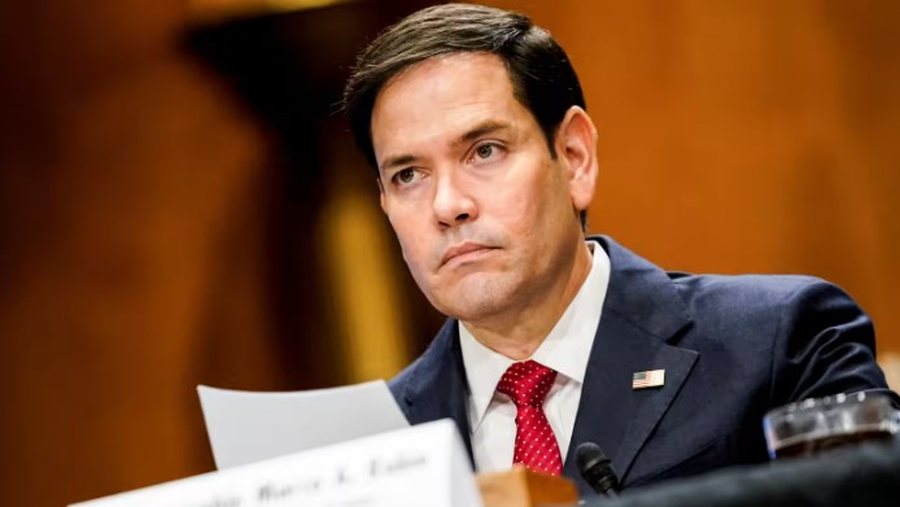
On April 3 and 4, the Foreign Ministers of the member countries of the North Atlantic Treaty Organization (NATO) will gather in Brussels for their regular spring meeting.
Like the defense ministers' meeting in February, all eyes will be on the American representative. Then the participant was Defense Secretary Pete Hegseth, and this time it is US Secretary of State Marco Rubio.
When Rubio was initially given the role in President Donald Trump's new administration, most Europeans rejoiced. He was seen as an ardent "transatlanticist."
Now, according to NATO diplomats RFE/RL spoke to, there is a sense of nervousness. While some say "he still understands us and the alliance," they question how much influence he really has within the US government and what he means when it comes to Ukraine, Russia and China.
However, two things are clear.
Like Hegseth, Rubio will insist on the message that European allies should increase defense spending and have a greater say in burden-sharing.
And, as in February, allies will hope that the US will reaffirm its commitment to NATO and Article 5 of the treaty, which deals with mutual defense.
Since the only other NATO meetings before the June summit are informal meetings of Foreign Ministers to be held in Turkey in mid-May and Defense Ministers in early June, this week's meeting serves, in many ways, as a dress rehearsal for the Hague summit to be held on June 24-26.
The purpose of that meeting is clear: To keep the alliance together, while significantly increasing defense spending.
NATO Secretary General Mark Rutte is demanding that each ally pledge to spend at least 3.7 percent of gross domestic product on defense as soon as possible and have regular reports on progress.
The initiative is intended to appease US President Donald Trump during the summit, but some European allies will be reluctant to quickly commit to large defense spending, given that they are facing slow economic growth and rising budget deficits.
Will Rubio ignore EU diplomacy chief Kaja Kallas again?
Perhaps the most important thing to watch during the ministerial meeting is the session dedicated to NATO-EU relations, where the European bloc will be represented by foreign policy chief Kaja Kallas.
Rubio ignored Kallas when she visited the US earlier this year, and all EU diplomats REL spoke to acknowledged that Washington does not see the EU as a serious interlocutor.
There is also a lot of tension, especially when it comes to the European Commission's latest proposal on defense spending: a possible loan of 150 million euros for EU member states to buy weapons, but not from countries outside Europe. The US is particularly concerned about any move that could put it out of the game if there is an increase in defense spending in Europe.
But the biggest concern, of course, is the deteriorating trade relationship.
Just a day before the NATO summit, the US is set to impose a 25 percent tariff on all auto imports, a move that will hit hard countries like Germany. This comes on top of existing US tariffs on European steel and aluminum, to which Brussels plans to respond with retaliatory measures on April 13.
Will the US increase pressure on Russia?
Another guest at the ministerial meeting is Ukrainian Foreign Minister Andriy Sybiha. He is expected to provide an update on the situation on the battlefield, but again, Rubio will be the one in the spotlight.
Will the US increase pressure on Russia if ceasefire agreements regarding infrastructure and traffic in the Black Sea are not respected?
While Ukraine's membership in the alliance is not on the agenda at the moment, most European allies are interested in at least ensuring that American weapons will continue to be sent to Ukraine and that NATO's training mission for Ukrainian soldiers, NSATU, will continue to operate.
So far, everything is continuing as before. There has been no change in the position of American troops on NATO's eastern flank.
What has changed, however, is that the US no longer chairs the Contact Group for the Defense of Ukraine, known as the Ramstein Group, which coordinates military support for Kiev. The UK chaired the group’s last meeting in February, and the next meeting, scheduled for April 11, could be co-chaired by the UK and France.
It is expected that London and Paris will also continue to work, at least on the sidelines of the ministerial summit, on a possible security force in Ukraine, in the event that a permanent ceasefire comes into effect.
However, details such as the number of troops, participating states, and the exact mandate currently remain unclear.
What is becoming increasingly clear is that work on a new NATO strategy for Russia has stalled. The strategy – which sets out how the alliance should engage with Moscow in the future – was due to be adopted at the Hague summit. But Washington has signalled it wants to avoid potential “angst” on the road to a final peace deal, and such a strategic document could do just that.
The foreign ministers of four NATO partners from the Asia-Pacific region – Australia, Japan, New Zealand and South Korea – will also participate in a session at the request of the US.
While the US administration views Beijing as a rival, its public criticism of China has so far been relatively subdued.
In this session, ministers will be interested in hearing Rubio's views on ways to approach a range of issues related to China./ REL (A2 Televizion)











